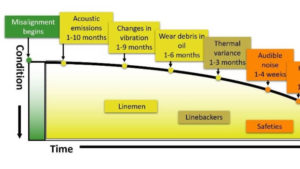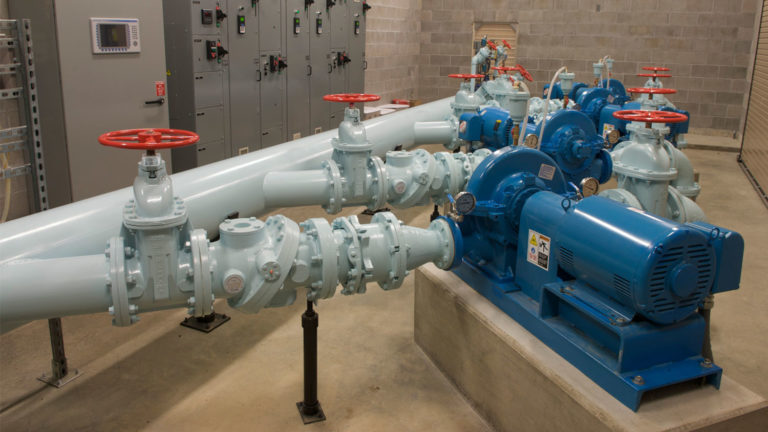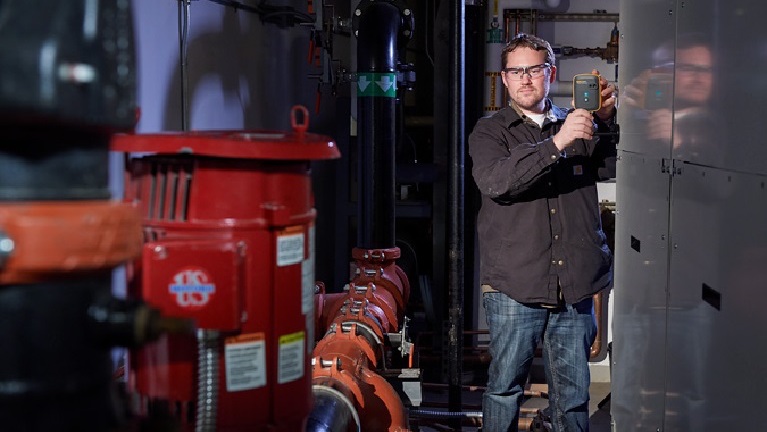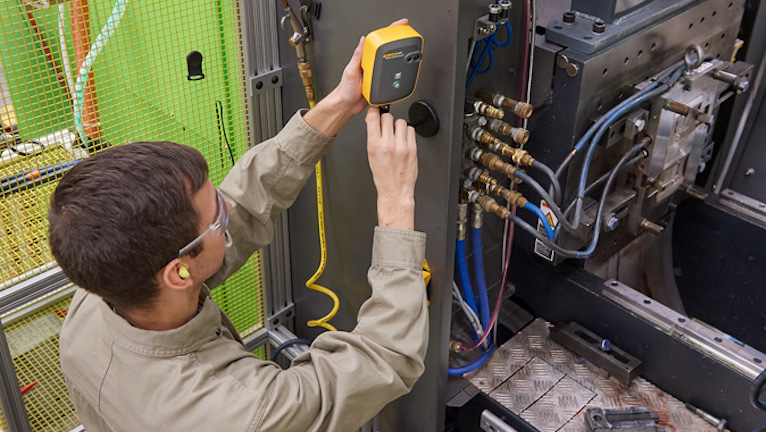Using football strategies to strengthen your reliability engineering game
Improving how reliability engineers handle their machinery and other assets requires a strong “game plan,” says Mike Smith, senior consultant at Life Cycle Engineering. He likes to borrow from football coaching—specifically, the defensive coordinator’s role—for ways to do that.
In the August 2020 webinar he presented for Fluke Reliability, “How to build a game plan to proactively manage your assets,” Smith leveraged football defensive strategies in outlining how to strengthen a reliability engineering game. You can watch the full webinar on the Accelix website.
Reliability engineering versus a defensive coordinator’s strategy
We think of the reliability engineer as a vital member of a plant’s leadership — a systems thinker whose job it is to prevent failure. In effect, Smith says, the reliability engineer “determines the plan of attack for each asset, utilizes a defense-in-depth approach to reduce failure, and studies the asset failure modes using FMEA (failure mode and effects analysis).”
This role is not so dissimilar to that of a football defensive coordinator, except that the coach is studying the offense using game analysis and films to develop a defense-in-depth approach that reduces scoring.
Both of them are looking to improve, be it asset performance or team performance in a game.
Smith coaches us to think strategically about reliability engineering:
- Map the interdepartmental relationships—from materials management to design engineering—and always adhere to continuous improvement
- Use criticality analysis, FMEA, and asset management to plan the work
- Implement the plans and predictive tools to do the work
- Analyze the CMMS for repeat failures, perform root cause analysis, and implement corrective and preventive measures
Understanding your opponent
If assets are akin to a reliability engineer’s opponent, the P-F curve (combined with asset-specific failure modes) is one of the best ways to study an asset’s weakness. Keeping in mind that assets have different failure patterns, Smith suggests we think about failure indicators similar to the defensive lineup. If you have good linemen, he says, chances are you’ll win the game. Likewise, if you have a decent acoustic emissions, vibration, and oil analysis program, the chances are high that you’ll detect changes in machine performance early on, in plenty of time to correct them before failure occurs.
Strong linebackers are also crucial to winning the game, but they’re the second line of defense. Similarly, thermal inspection will help you identify oncoming issues in time to prevent them, but just barely. To paraphrase Smith, if the offense makes it to your safeties, you’d better hope that your operators have been trained to identify unusual noises or heat, or your machine will be headed to failure.


Figure 1: Combining the P-F curve with football strategies to build a defense against asset failure.
Developing a game plan
FMEA is critical to developing a reliability engineering game plan. Put differently, FMEA is where the P-F curve meets a specific asset, and, based on how that asset is likely to fail, the engineer lays out what blockers need to be deployed when and where.
FMEA control strategies probably should include predictive tools and condition-based maintenance. But Smith notes there are plenty of other approaches to consider, from failure-finding maintenance to scheduled discards, depending on the asset’s criticality and other factors. “From a football standpoint, [identifying your control strategies] is building your game plan,” he says.
The RCA process, meanwhile, starts with a problem notification and moves through to clarification, analysis, corrective action, verification, and documentation. When preparing an RCA, Smith says your team should include an operator, a subject-matter expert on that system, and a well-trained facilitator who can “put people at ease and draw out the critical information.” You’ll get an in-depth walkthrough of the six-step RCA process in Smith’s Fluke Reliability webinar.
To move forward with your asset reliability game plan, Smith advises conducting a self-assessment. You’ll find tools for that on the Life Cycle Engineering website under the ATLAS section.






